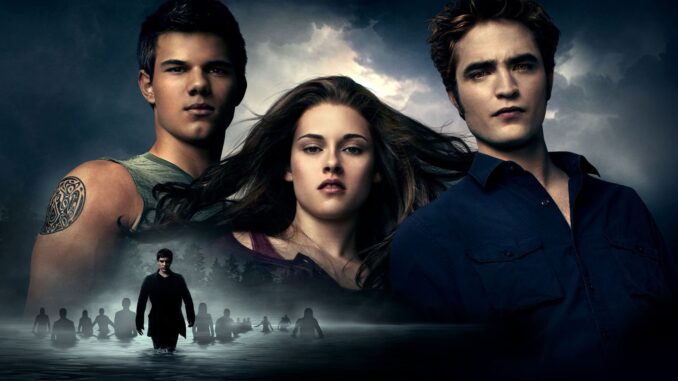
The Unfurling: Kristen Stewart’s Life After Twilight
The Twilight saga cast a long, incandescent shadow, a cinematic phenomenon that propelled its young stars into an orbit of global fame, intense scrutiny, and the kind of adulation that often morphs into a gilded cage. For Kristen Stewart, the doe-eyed, perpetually conflicted Bella Swan, the transition from the world of vampires and werewolves was not merely a career pivot; it was an act of profound self-reinvention, a deliberate shedding of a skin that had become too tight. Her life after Twilight unfolds as a compelling triptych: a courageous recalibration of her career, an authentic embrace of love and identity, and the quiet assumption of new roles that extend far beyond the silver screen.
The immediate aftermath of Twilight could have been a cautionary tale. Typecast, scrutinized, and often dismissed as merely the stoic face of a teen phenomenon, Stewart found herself at a crossroads. Many actors, trapped by the gargantuan success of a franchise, spend years trying to outrun their most famous role. Stewart, however, plunged headfirst into the opaque waters of independent cinema, as if seeking to cleanse herself of the blockbusters’ sheen. This was not a tentative dip; it was an immersive dive. She sought out challenging, often unsettling roles under the guidance of auteur directors, meticulously crafting a new artistic identity. Films like Olivier Assayas’ Clouds of Sils Maria (2014), for which she became the first American actress to win a César Award, and Personal Shopper (2016), solidified her reputation as a nuanced, fearless performer capable of embodying profound vulnerability and enigmatic strength. Here, the nervous tics and understated delivery that once drew criticism were recontextualized as raw authenticity, a quiet power simmering beneath the surface. She played fragile figures, haunted women, and complex individuals, roles demanding an interiority far removed from the wide-eyed wonder of Forks. Her brief yet impactful turn in Still Alice (2014) alongside Julianne Moore further showcased her dramatic chops, proving she could hold her own against cinematic giants. This period was less about chasing fame and more about artistic validation, a conscious act of reclaiming her narrative through the choices she made on screen.
Beyond the specific roles, this career metamorphosis was also about Stewart redefining her relationship with the industry itself. She became a muse for Chanel, a paradoxically rebellious face for a luxury brand, embodying a modern, unconventionally chic persona. Her red carpet appearances, once marked by an almost defiant casualness, evolved into statements of effortless cool, mirroring her artistic evolution. Then came Spencer (2021). Portraying Princess Diana was a role that, on paper, seemed impossible for her to inhabit, yet Stewart delivered a performance that garnered critical raves and an Oscar nomination. It was a culmination of her indie journey – the deep character work, the vulnerability, the subtle physical language – applied to a figure of immense public fascination. Here, the "new roles" for Stewart converged: she was not just an actress, but an interpreter, an embodiment of complex womanhood, and a conduit for stories that transcended mere entertainment.
Her journey through the labyrinth of personal relationships, often played out under the relentless glare of the paparazzi, became a quiet revolution of self-acceptance. The public’s obsession with her Twilight-era romance with Robert Pattinson was intense, bordering on suffocating, creating a narrative of "Robsten" that overshadowed her individual identity. After the dissolution of that high-profile relationship, Stewart embarked on a more private, yet ultimately more open, exploration of her sexuality and identity. She moved beyond the confines of heteronormative expectations, entering relationships with women and speaking about her fluidity with a refreshing candor that felt both liberating and defiant. This wasn't a calculated move for public appeal; it was an authentic unfurling. Relationships with Stella Maxwell, Sara Dinkin, and eventually her fiancée Dylan Meyer, were navigated with a newfound self-possession. She spoke of love not in terms of gender, but in terms of connection, radiating a confidence born from personal liberation. This openness, initially met with some surprise, quickly cemented her status as an LGBTQ+ icon, not through overt activism, but through the quiet power of simply being. Her love life became another canvas for authenticity, demonstrating that true selfhood is found not in hiding, but in courageous expression.
In her post-Twilight life, Kristen Stewart has embraced a constellation of new roles that extend beyond the acting credits. She is now a director, having debuted with the short film Come Swim (2017), demonstrating her ambition to shape narratives from behind the camera. She is a producer, a creative force intent on fostering stories that resonate with her artistic sensibilities. She is, for many, an unlikely style icon, her effortless, punk-tinged glamour inspiring a generation. More profoundly, she has become an archetype of resilience, a testament to the power of artistic integrity and self-possession in an industry often driven by compromise. From the awkward, beloved teen heroine, she has metamorphosed into an artist of undeniable gravity, a woman who chose the challenging path less traveled, forging a career and a life defined by authenticity, grit, and an unflinching commitment to her true self. Kristen Stewart didn't just survive the Twilight shadow; she stepped out of it, unfurled her wings, and soared into a vibrant, self-made light.
